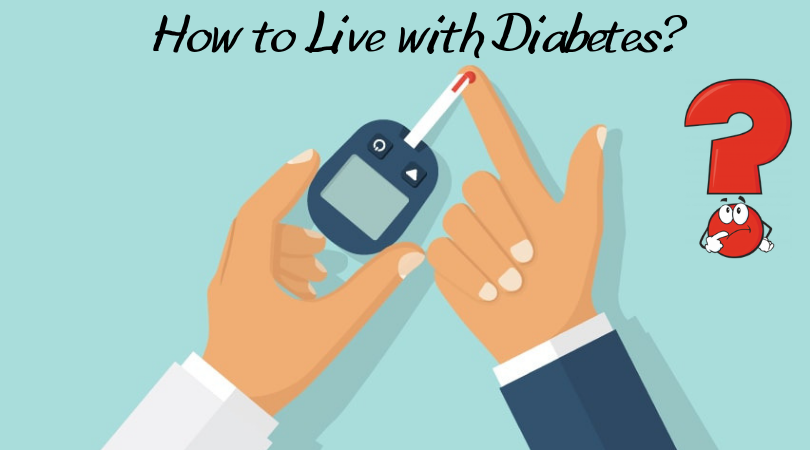Diabetes mellitus is a chronic disease characterized by an increased blood glucose level (hyperglycemia). Diabetes is the result of a violation of insulin release, the action of insulin, or both. Chronic hyperglycemia in diabetes mellitus is accompanied by damage and dysfunction of various organs, especially the eyes, kidneys, nerves, heart, blood vessels. However, you can learn to manage your illness and live a full life.
How to live with diabetes?
It is important to regularly monitor the level of glucose in the blood and keep it at a level as close to the norm as possible. You need to take a few simple steps to live a full life:
- weight loss;
- healthy nutrition;
- regular exercise;
- smoking cessation;
- not abusing alcohol;
- observance of oral hygiene (patients with diabetes mellitus have a high risk of teeth and gums diseases).
It is also important to:
- maintain normal blood glucose, blood pressure, cholesterol, glycated hemoglobin (HbA1c). You have to follow the recommendations of the attending physicians;
- regular intake of glucose-lowering drugs (tablets and insulin).
Some more important aspects are:
- regularly (at least once every 1-2 months) undergo an endocrinological examination;
- regularly (at least once a year) to undergo an examination by an oculist, a neurologist (if indicated), a cardiologist (if indicated), an angiosurgeon (if indicated);
- regularly perform self-monitoring of blood sugar levels (using a glucometer), glycated hemoglobin (HbA1c), blood pressure and cholesterol.
Weight loss
If there is overweight, the body cannot effectively use insulin. This means that the control of diabetes mellitus cannot be carried out properly.
You need to make significant changes in your diet to reduce weight. An increase in physical activity will also be helpful. You should not despair if the decrease in body weight slows down after time. This is a fairly long process.
The benefits of weight loss:
- help to reduce blood pressure, cholesterol and blood glucose levels;
- provide improved control over the course of diabetes;
- bring satisfaction with the exercise;
- help become more confident.
Regular exercise
Exercise is very important to maintain the required level of sugar in the blood and reduce the risk of complications caused by diabetes. Before you begin regular physical exercises, you need to consult a specialist.
The benefits of physical activity
It prevents the development or slows down the progression of type 2 diabetes. It helps compensate for diabetes. It also prevents the development of cardiovascular diseases. It helps to reduce the level of “bad” cholesterol. It helps control blood pressure, reduces and controls weight. It improves well-being.
Physical activity must necessarily include: warm-up, workout, unloading. The physical activity should be 5 times a week for 30 minutes. In addition, you can quite simply increase physical activity without visiting the gym, for example: walking up the stairs instead of using the elevator, walking instead of using the transport, getting out the bus before your stop, cycling, visiting a swimming pool.
Healthy nutrition
Recommendations for a healthy diet are the same for people with or without this diagnosis:
- regularly eat foods rich in complex carbohydrates (bread, pasta, flat cakes from durum wheat, potatoes, rice, cereals);
- consume more foods rich in omega-3 polyunsaturated fatty acids (salmon, cod, haddock and other types of fish, vegetable oils, nuts and seeds).
It is required to reduce the intake of foods rich in saturated fat (meat and dairy products with high-fat content):
- choose lean pieces of meat and cut off the visible fat;
- cook food on the grill, steamed, in a microwave oven;
- choose low-fat dairy products (milk with a fat content of not more than 2.5% or skimmed milk, dietary yogurt, cottage cheese with 0-4% fat);
- eat vegetables and fruits daily (at least 500gr per day);
- carefully study the labels on products with information about the level of proteins, fats and carbohydrates (low-fat products may contain large amounts of carbohydrates).
- exclude sugar-containing products from the diet – cakes, chocolate, sweet pastries, etc.;
- reduce salt intake (up to 2-3 grams per day);
- experiment with various herbs and spices as a topping;
- drink 1.5-2 liters of water per day.
Quitting smoking and alcohol
Smoking and alcohol increase the risk of cardiovascular diseases and complications of diabetes. Quitting these two bad habits can save money and improve your figure and appearance.


